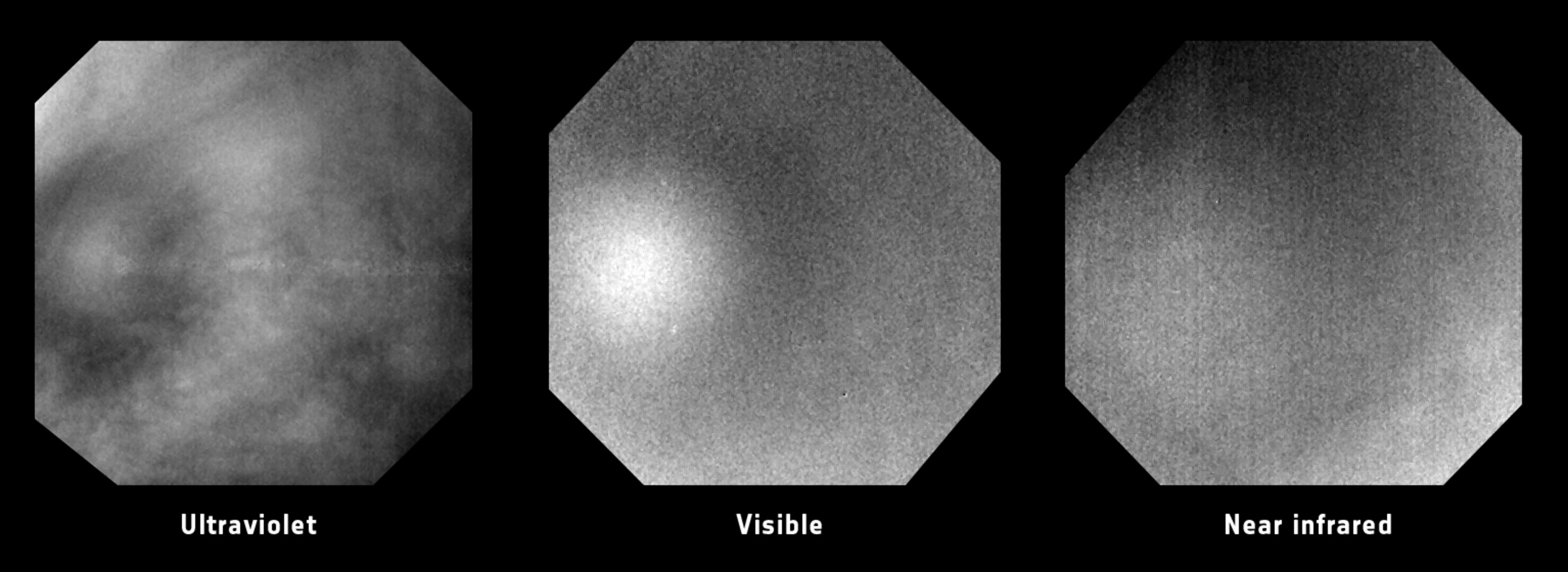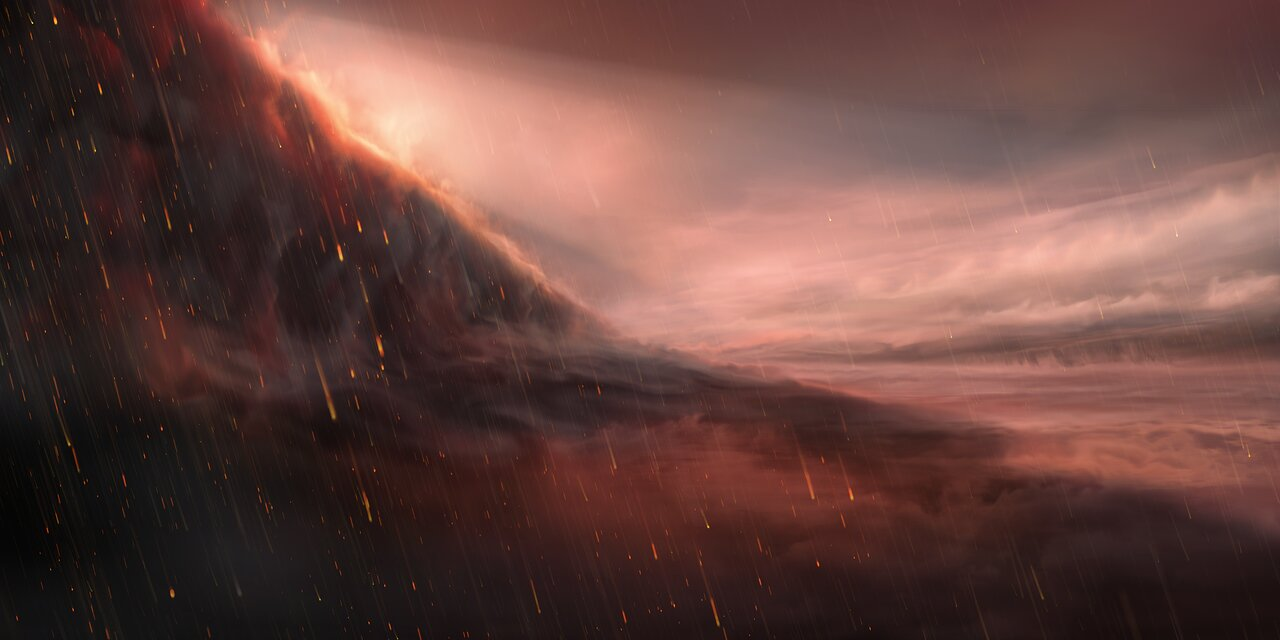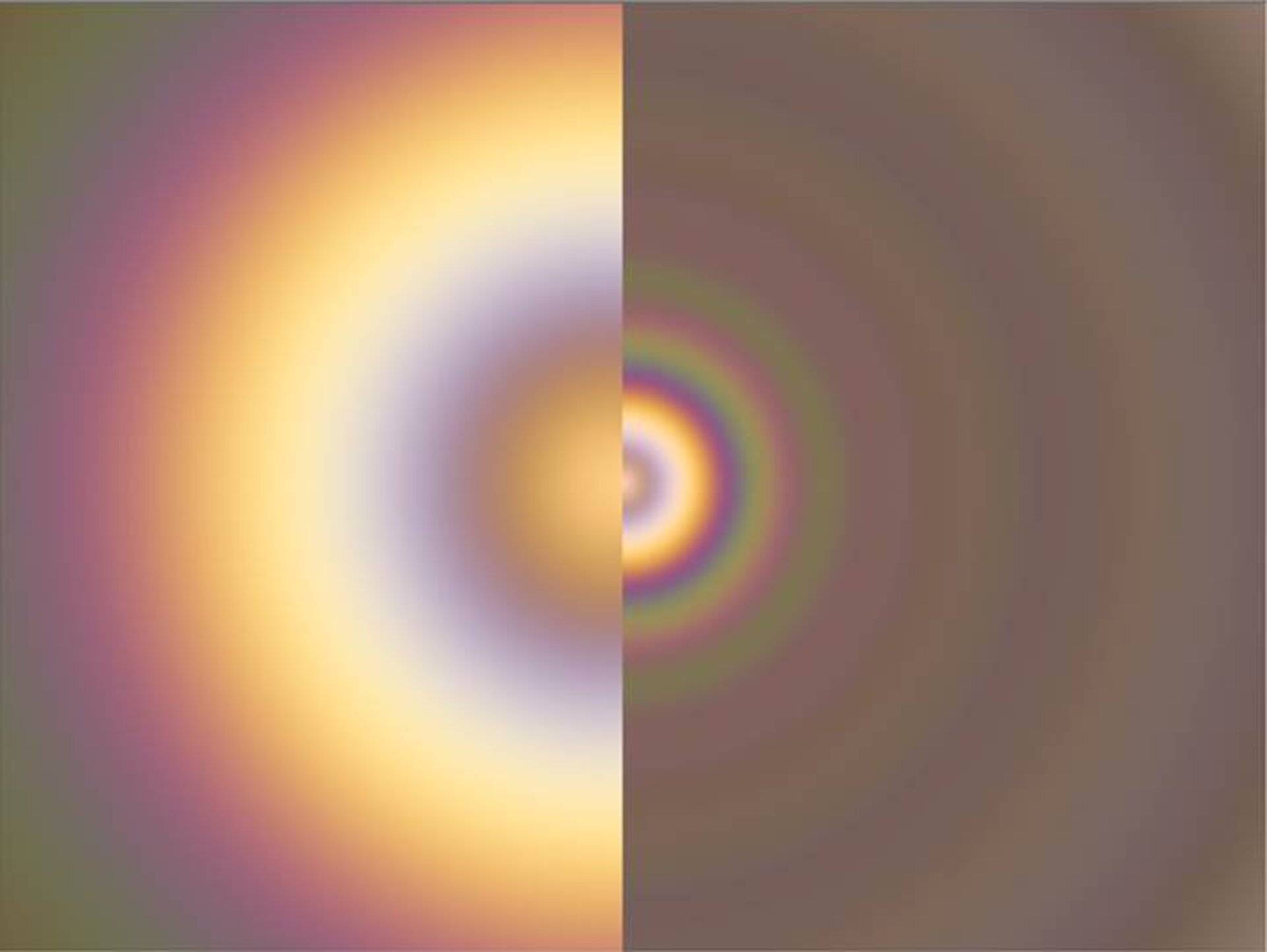Astronomers have spotted evidence of the meteorological phenomenon known as a glory on another planet. If this were Mars or Jupiter it would be remarkable enough, but the planet in question is WASP-76b, which is millions of times further away than either of them, outside the Solar System.
A glory consists of one or more circular rings that display the colors of the rainbow – red on the outside and violet inside. Although also caused by the bending of light by water droplets, glories differ from true rainbows because backscattered light is diffracted between water droplets, rather than refracted when entering and leaving them. They get their name because they look like the halos around the heads of saints in medieval paintings (which may in turn have been inspired by glories).
Glories can only be seen when looking down at one’s shadow from a significant height. Even today in an era of flight they are rare enough to cherish. When the only way to see them was from a mountainside or tall building they must have seemed wondrous indeed, but spotting one on another world is surely more awe-inspiring still.
In 2014 the European Space Agency (ESA) spotted a glory in the clouds of Venus, but they have now far outdone themselves, finding what they suspect is a glory’s influence on a planet famous for making Venus look hospitable.

Venus’s glory doesn’t look colorful in images like these, but the circular patterns can be seen and the patterns at different wavelengths reveal its resemblance to glories on Earth.
Image credit: ESA/MPS/DLR/IDA
WASP-76b is so hot it is thought to rain iron. Being both very close to its star and (almost certainly) tidally locked, WASP-76b has a permanent daylight side where temperatures reach 2,400°C (4,350°F), give or take a few hundred degrees for atmospheric effects. The night side is certainly cooler, but has to put up with the mighty winds caused by the temperature difference. Near the borderline between day and night, metals vaporized on the day side condense and fall as rain.

Artist’s impression of iron raining from the skies on WASP-76b’s dark side, where it is cool enough for vaporized iron to liquify.
Image credit: ESO/Martin Kornmesser
You’d expect such a world to be more associated with devils’ horns than saintly halos. Yet the ESA’s Characterizing ExOplanet Satellite (Cheops) found an unexpected pattern of light coming from this hellhole. At this distance, Cheops lacks the resolution to see the glory directly, but astronomers have noted an asymmetry in WASP-76b’s edges as it transits across its star, with the entry to the transit brighter than the exit.
Dr Olivier Demangeon of Portugal’s Institute of Astrophysics and Space Sciences and colleagues turned for help to other space telescopes to work out what was going on. Neither Hubble nor Spitzer could solve the problem, but when Cheops monitored WASP-76b for 23 transits over three years, data from TESS provided the match they needed. Together they revealed an enhancement in the light from the planet’s eastern border between the day and night halves.
“This discovery leads us to hypothesise that this unexpected glow could be caused by a strong, localised and anisotropic (directionally dependent) reflection – the glory effect,” Demangeon said in a statement emailed to IFLScience.
Without being able to resolve the rainbow colors directly, it’s possible the extra light Cheops and TESS picked up has some other cause. However, Demangeon and co-authors have found evidence inconsistent with previous explanations, such as an asymmetry in the wind patterns.

A comparison of how the glories on Venus (left) and Earth would look if visible with equipment that could see the colors. The difference in ring size reflects the much smaller droplets in Venus’s atmosphere.
Image credit: C. Wilson/P. Laven
On Earth it’s water droplets that make glories. Almost 20 types of atoms, ions, and molecules have been identified in WASP-76b’s atmosphere already. One of these, or something not yet found, might produce the glory effect, so these findings are not proof of water. However, anything causing a glory would need to be perfectly spherical and highly reflective. Even the famous iron rain could be responsible, although the authors consider a more complex scenario more likely.
Whatever the droplets involved, their persistence means that close to the terminator (the boundary between night and day), WASP-76b has been able to support these molecules continuously for three years. This in turn would imply considerable temperature stability, at least high in the atmosphere, however hellish it gets below.
Dr Theresa Lüftinger, Project Scientist for ESA’s upcoming Ariel mission added, “Further proof is needed to say conclusively that this intriguing ‘extra light’ is a rare glory.” Lüftinger is not an author on this paper, but says the Ariel mission is one of several that may be able to provide such confirmation.
Meanwhile Demangeon said, “I was involved in the first detection of asymmetrical light coming from this weird planet – and ever since I have been so curious about the cause. It has taken some time to get here, with moments where I asked myself – ‘Why are you insisting on this? It might be better to do something else with your time.’ But when this feature appeared out of the data, it was such a special feeling – a particular satisfaction that doesn’t happen every day.”
The study is published in Astronomy & Astrophysics.
Source Link: We May Have Just Seen The First Rainbow-Like Glory On A World Outside Our Solar System